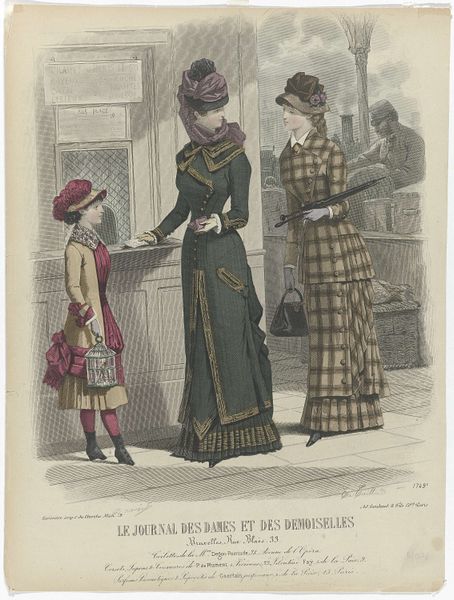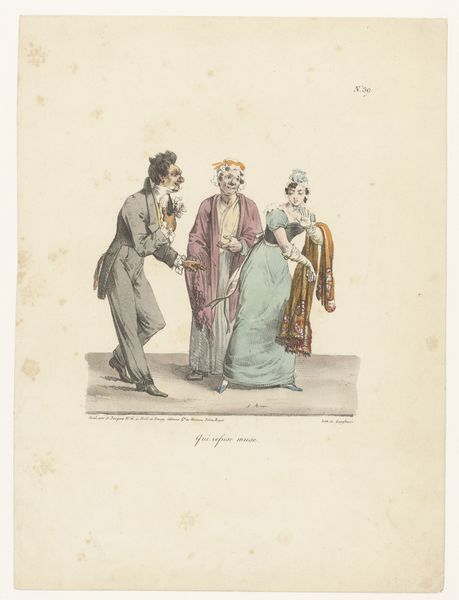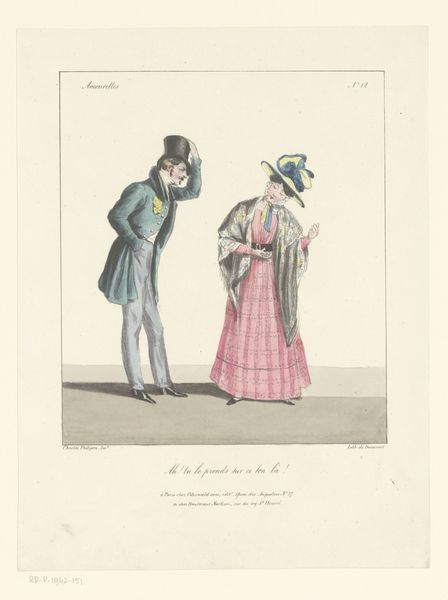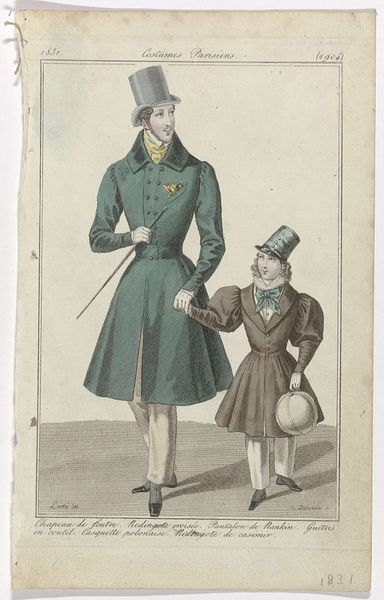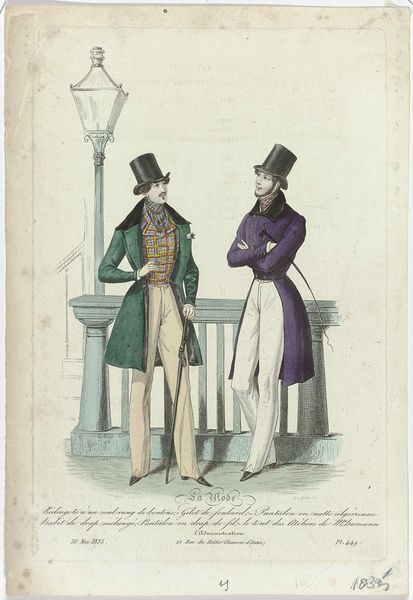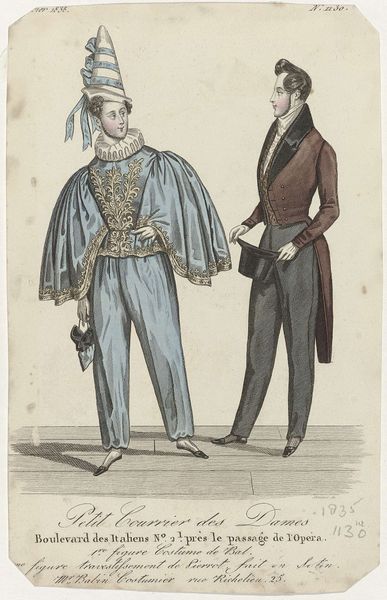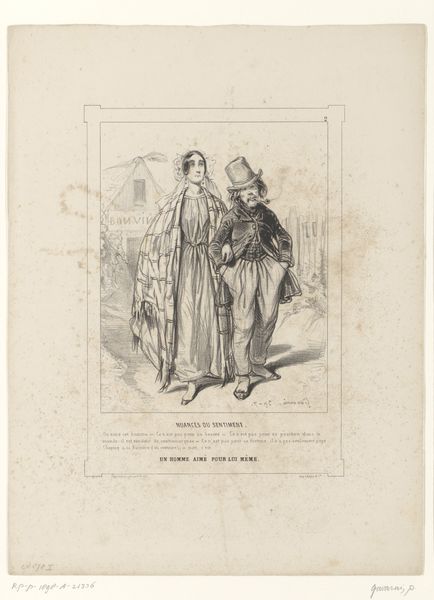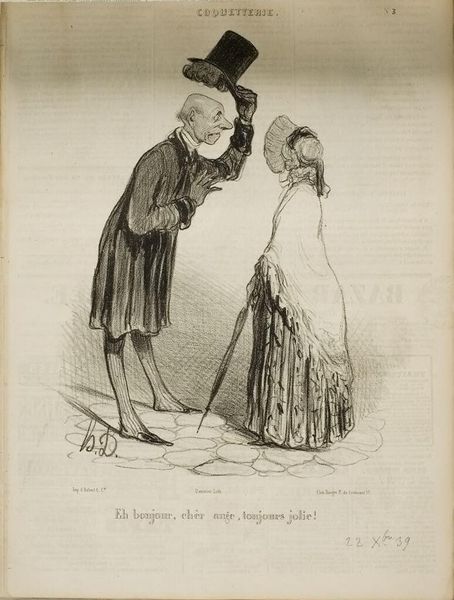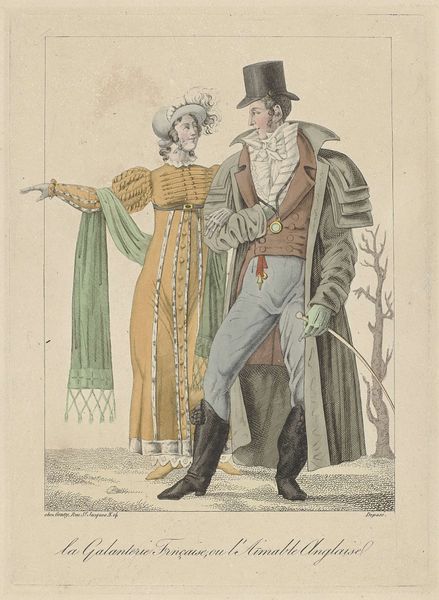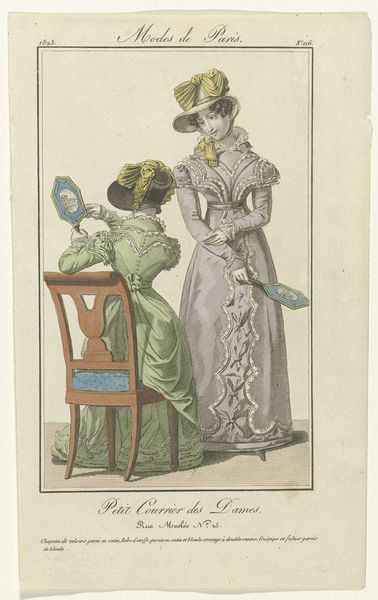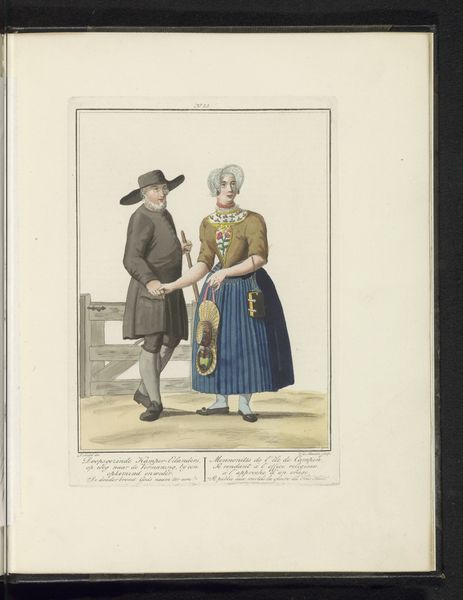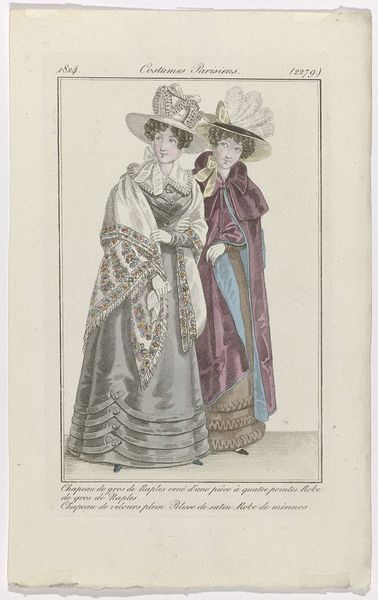
print, engraving
#
portrait
# print
#
figuration
#
historical photography
#
historical fashion
#
romanticism
#
cityscape
#
genre-painting
#
history-painting
#
engraving
Dimensions: height 288 mm, width 213 mm
Copyright: Rijks Museum: Open Domain
Curator: I’m immediately struck by how awkward these figures appear! The stiffness, the contrived poses... Editor: Indeed. What we're looking at is an engraving titled "Costumes Français, 1799 : Polonaise de Satin...", dating from around 1799. It is an intriguing window into French fashion at the close of the 18th century. Consider the production: an anonymous print, readily disseminated—revealing much about the consumption of images and sartorial aspirations in the era. Curator: And it's the costumes themselves that fascinate! Look at the layering, the textiles represented. We see satin, cashmere—expensive materials signaling a certain social status. This wasn't everyday wear for the masses. And consider the labor involved: weaving, embroidery… each piece a testament to skilled craftsmanship. Editor: Absolutely. This image is saturated with signs of privilege—social and economic power is draped around the figures. The male gaze is prominent, and how might women be seen here versus how they were actually treated during that era? Curator: Perhaps. What interests me more is the depiction of the fabrics, the rendering of texture through engraving. Observe how the artist differentiates between the sheen of the satin and the matte finish of the man’s coat, through a skillful use of lines. The material’s properties is communicated without actually physically representing it. It becomes something else. Editor: I think your focus is useful. But I want to go back to class dynamics… even revolutions don't instantly erase deep societal structures. Also, I have so many questions about gender roles at play in France and other countries throughout Europe around this time! How limiting these restrictive sartorial choices can be in terms of agency. Curator: I'd argue the artist here is deliberately showcasing those choices, calling our attention to the materiality of social status through detailed replication. Each pleat, each fold tells a story of manufacture and design. It all exists within its creation. Editor: So interesting to approach this through the tangible reality of textiles and the human cost behind fashion. Curator: It brings another dimension, yes, which adds texture to how one may choose to view art such as this, adding our own impressions in.
Comments
No comments
Be the first to comment and join the conversation on the ultimate creative platform.
